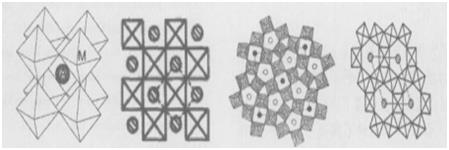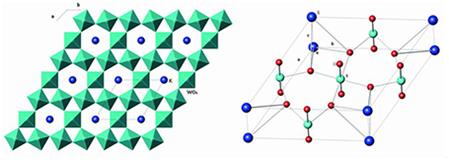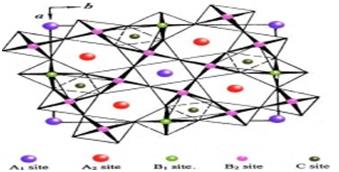Tungsten bronze is essentially a solid solution formed after metal atoms are inserted into the WO3 lattice. When all vacancies are filled, the resulting compound is MWO3. The formation of tungsten bronze is related to the variable atomic valence of tungsten. If only part of the vacancies are replaced by atoms of alkali metal, some tungsten atoms will change from hexavalent to pentavalent.
Taking the cubic unit cell as an example, W ions occupy the apex position, O ions occupy the edge center, and M ions occupy the body center position.
The structures of several different types of tungsten bronze are shown in the figure. It can be seen that the cubic structure of tungsten bronze only contains square tunnels, while the tetragonal structure of tungsten bronze contains not only quadrilateral, but also triangular and pentagonal tunnels, and the hexagonal structure of tungsten bronze Tungsten bronze contains not only hexagonal tunnels, but also triangular tunnels. Here, no intergrowth structure is given, because the intergrowth structure is a combination of tetragonal structure and hexagonal structure, and the specific combination varies from compound to compound. (Tunnels are gaps)

(a) Cubic structure

(b) Tetragonal structure

(c) Hexagonal structure
More details of cesium tungsten bronze product, please visit website: cesium-tungsten-bronze.com
Please contact CHINATUNGSTEN for inquiry and order of cesium tungsten bronze:
Email: sales@chinatungsten.com
Tel.: 86 592 5129595






